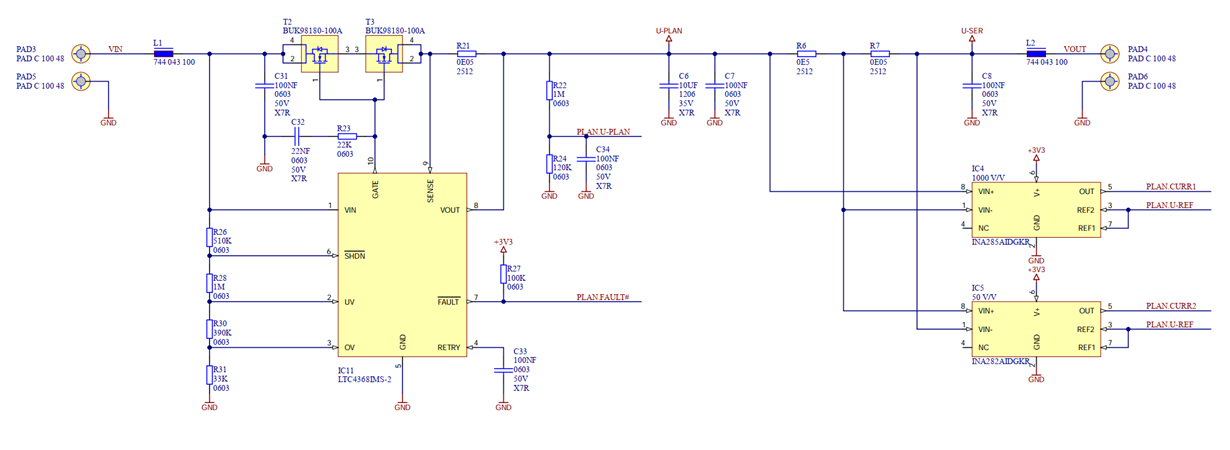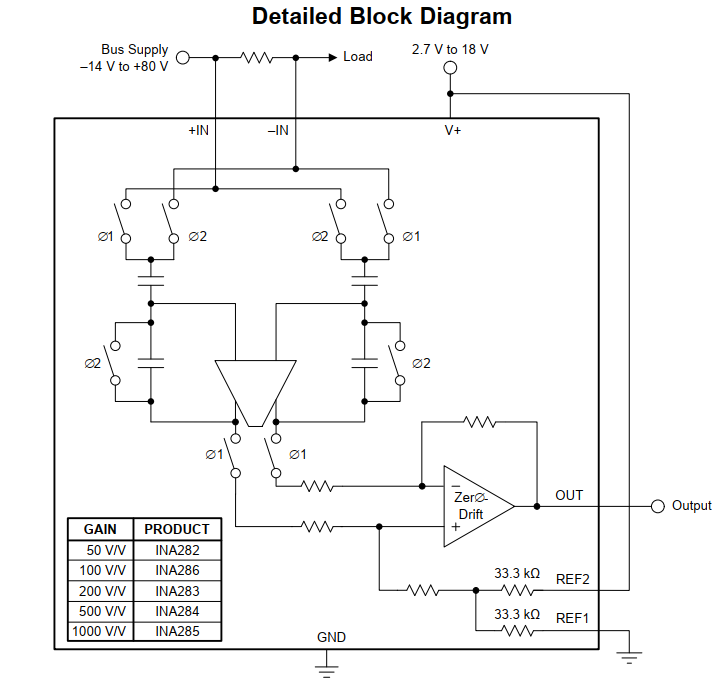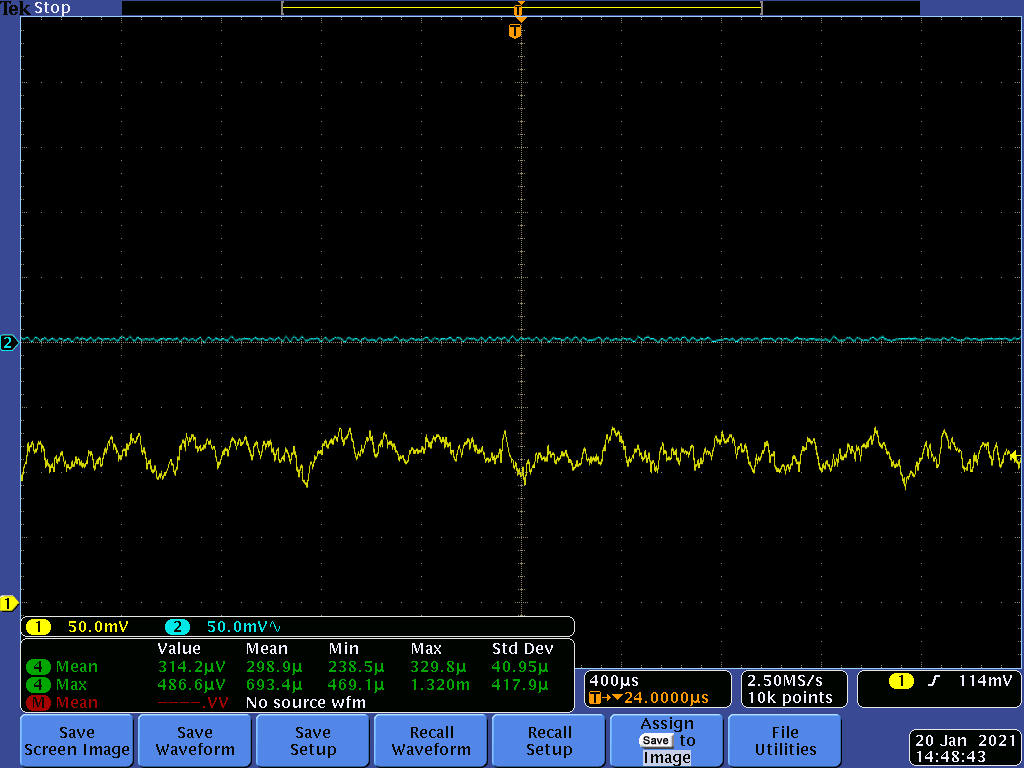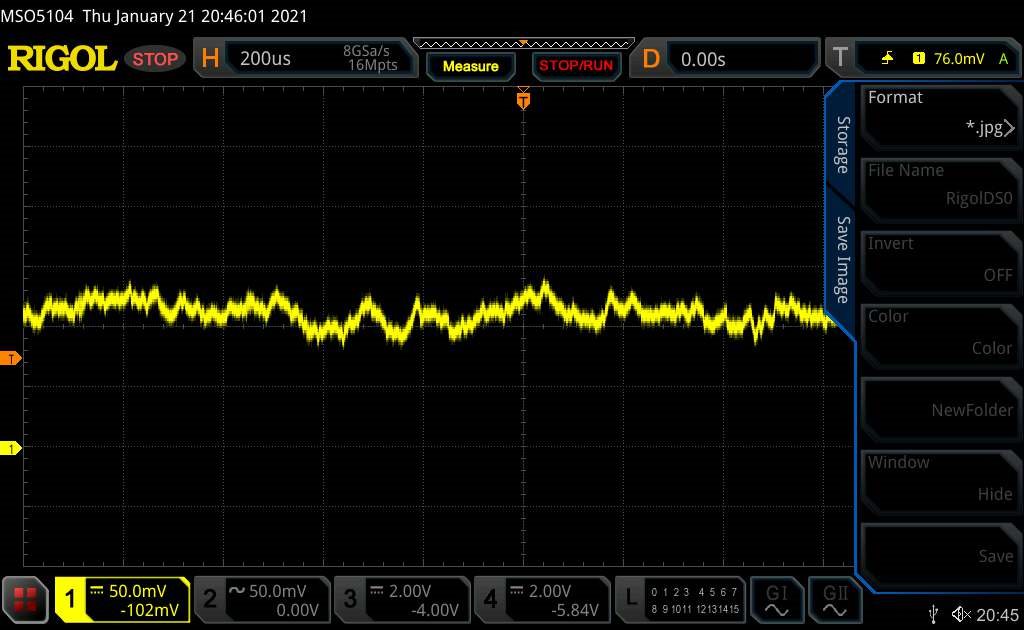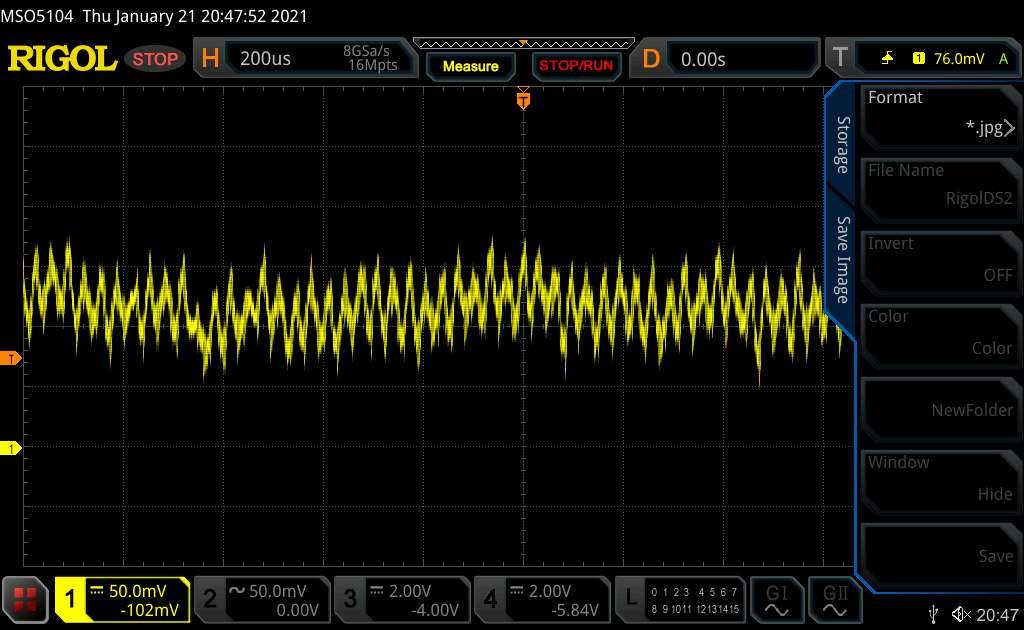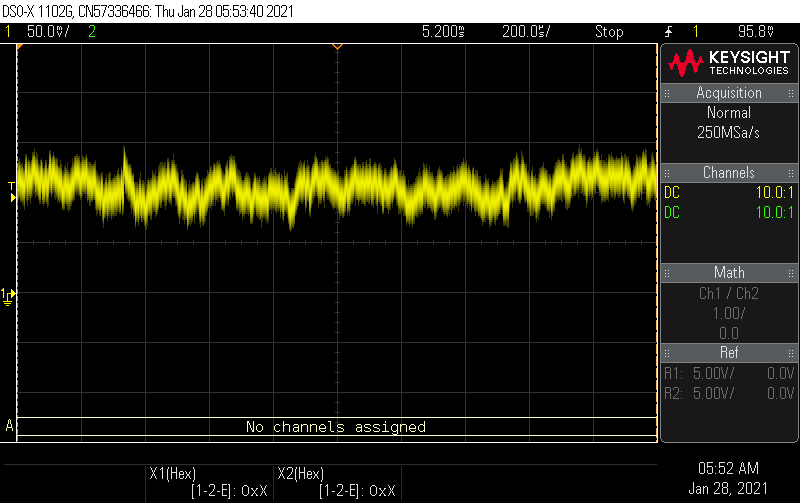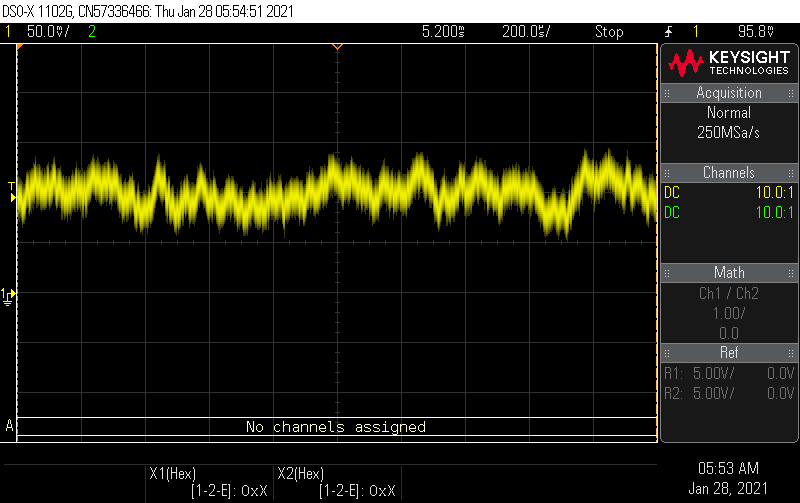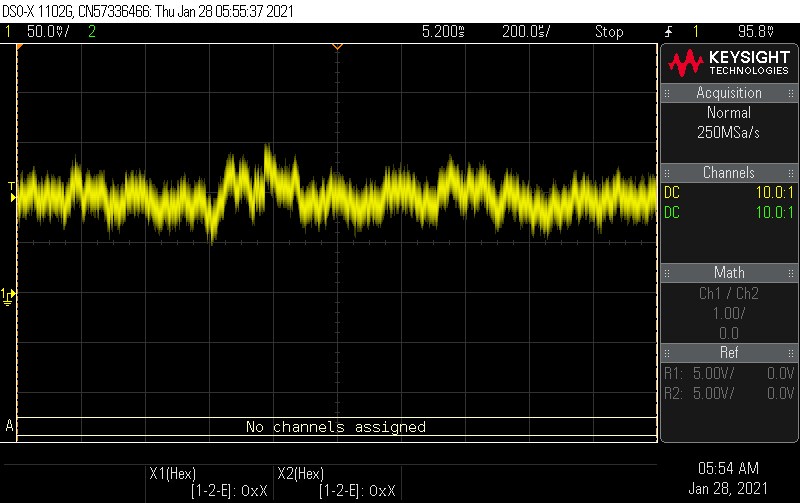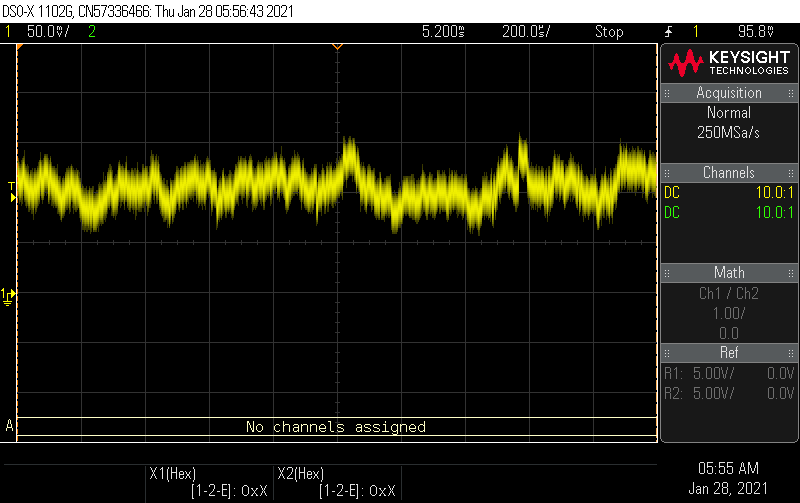Other Parts Discussed in Thread: INA185, INA190, INA282
I'm using INA285 for sensing current in the range of 1uA. The chip is supplied with 3.3V. Current will be sensed on the high side of an additional supply. If that additional supply is below 3.3V the output of INA is constant. But if additional supply is increased above 3.3V an additional noise of about 50mV is on the output.
3.3V supply is blocked by 600 ohm bead and a 100n bypass capacitor.
How can I improve the output signal
Best regards,
Gottfried


